Dendrocalamus Asper shoots are superior quality, sweet, juicy, and with wonderful texture.
This year we harvested shoots for food for the first time, what a delight!



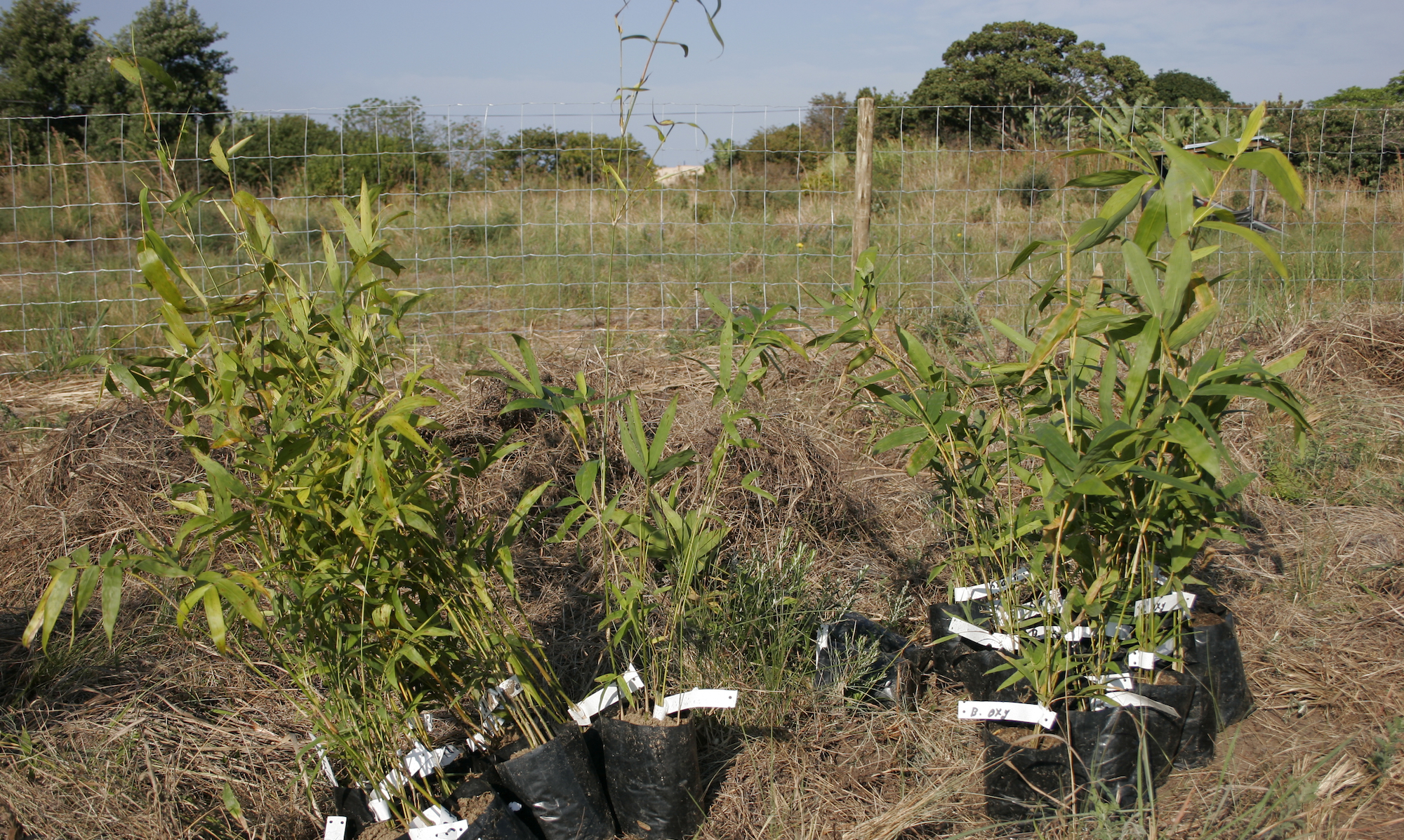
Exploring the creative potential of bamboo
Dendrocalamus Asper shoots are superior quality, sweet, juicy, and with wonderful texture.
This year we harvested shoots for food for the first time, what a delight!



Monopodial bamboo can easily become a nuisance by spreading far and wide.
Rhizome barriers are recommended by specialists, but over time the rhizomes will find their way either over or under the barrier, so we decided to trial the trenching method.
We dug a trench one foot wide and one foot deep all around the runner, and filled it with loose organic materials such as leaves and grass cuttings.
If there are no obstacles in the way, the rhizomes grow horizontally and are easily found in the trench.
Every six months we go through the trench to find the “escaping” rhizomes, cut them off close to the mother plant and take out the rhizome.
This has proven most efficient, we didn’t have any further spreading in over 4 years.
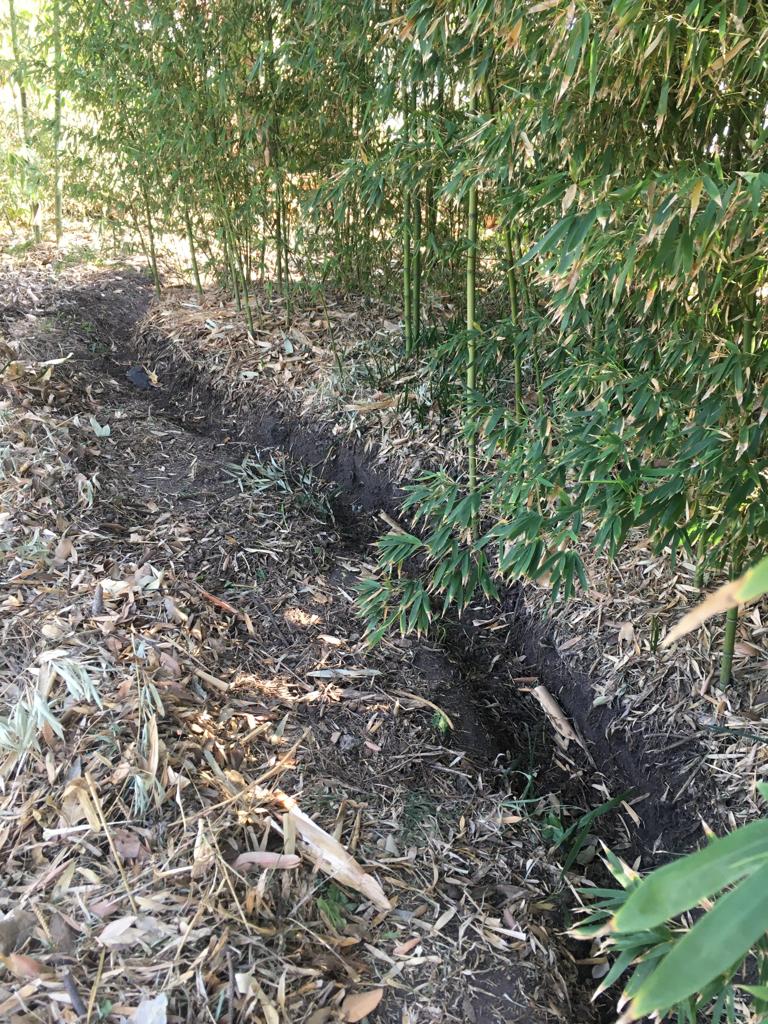
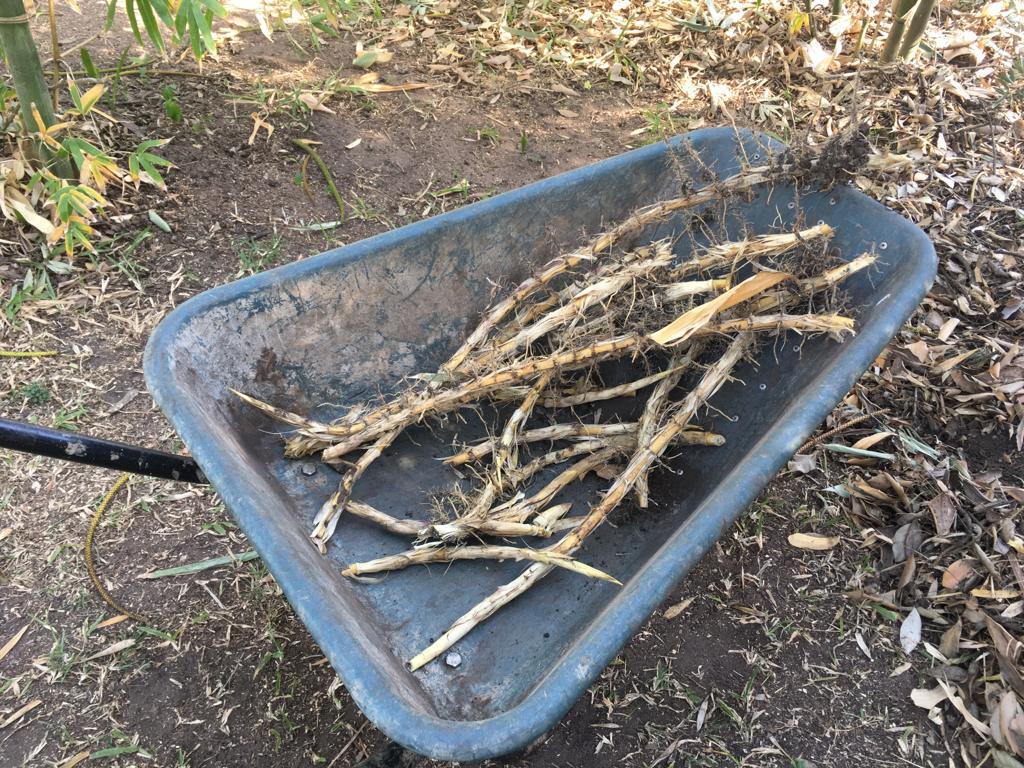

With the help of my good friend Ray Eshelby we built a smokeless charcoal retort from up-cycled materials and it works perfectly – we use wood from the garden as fuel in the outer chamber and pack the inner chamber with bamboo pieces, light it from the top and then put the lid with the chimney on top.
The wood gases are being burnt off inside for extra efficiency and only a heat flare is visible, there is no smoke whatsoever after closing it. It burns for a few hours and the huge amount of heat can also be used, for example for cooking, frying or boiling water for purification.
I am hugely excited about this success, since bamboo charcoal has superior qualities and a wide range of practical applications such as soil enhancement, filters, and fuel, just to name a few.


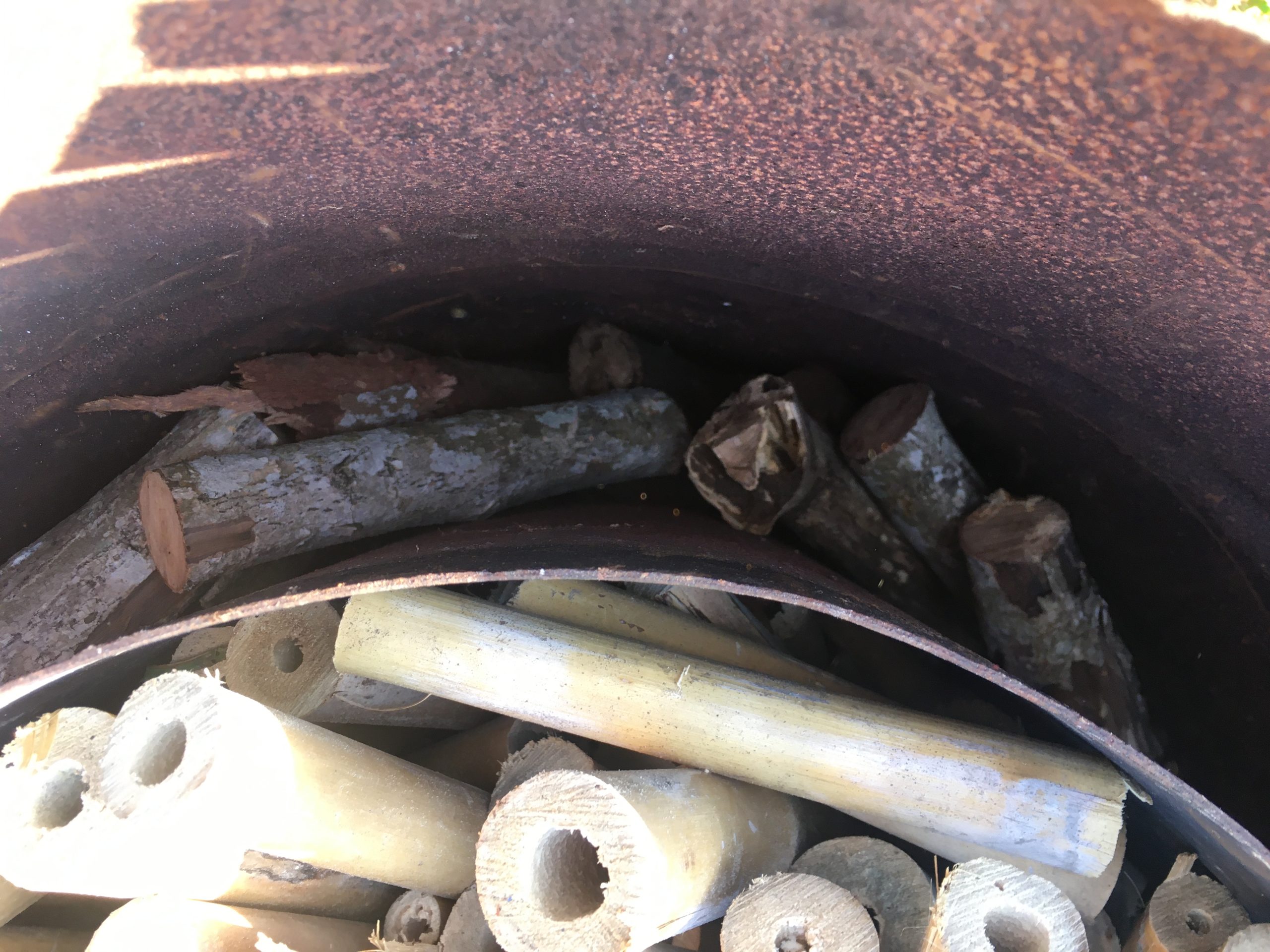



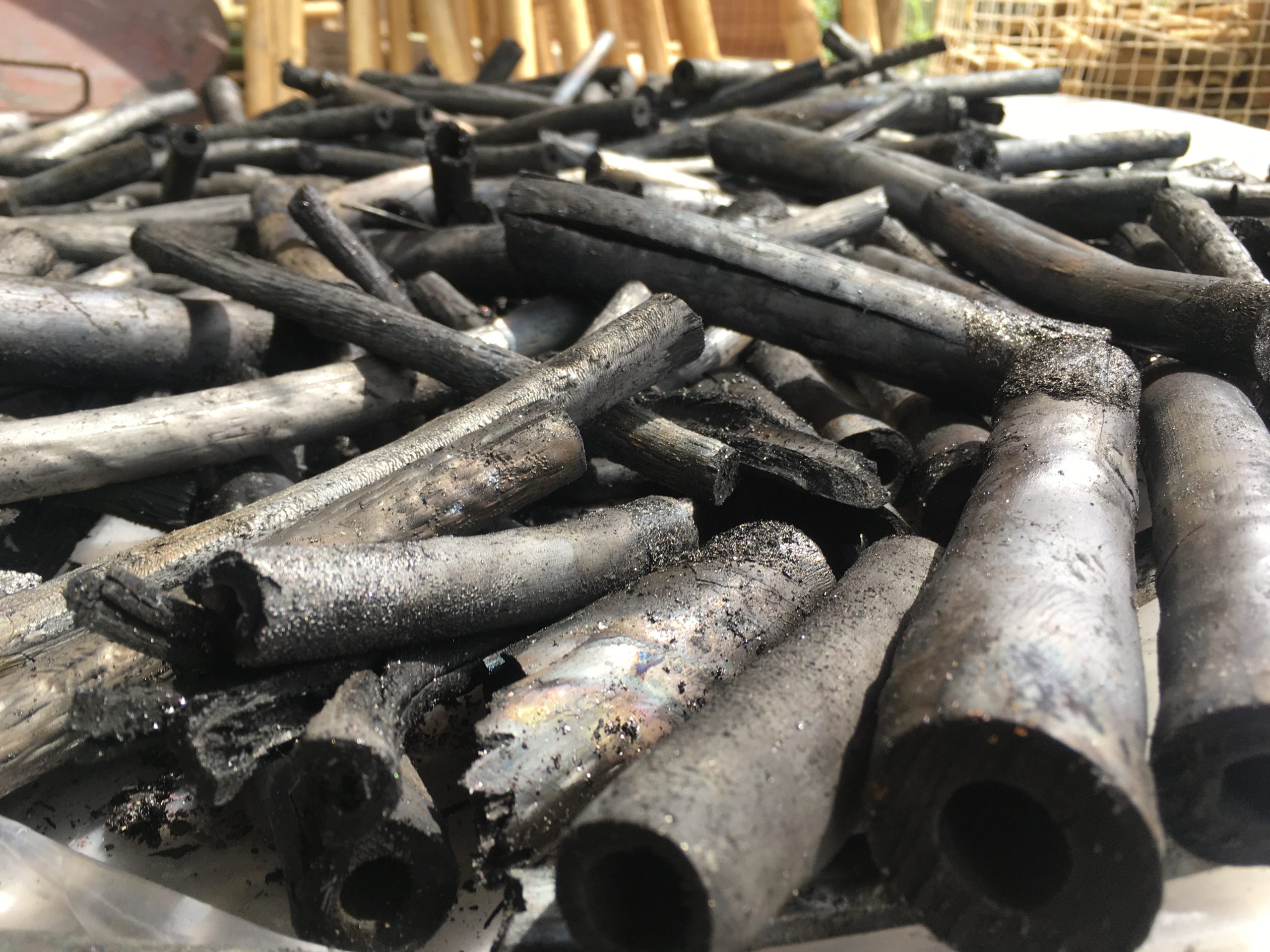
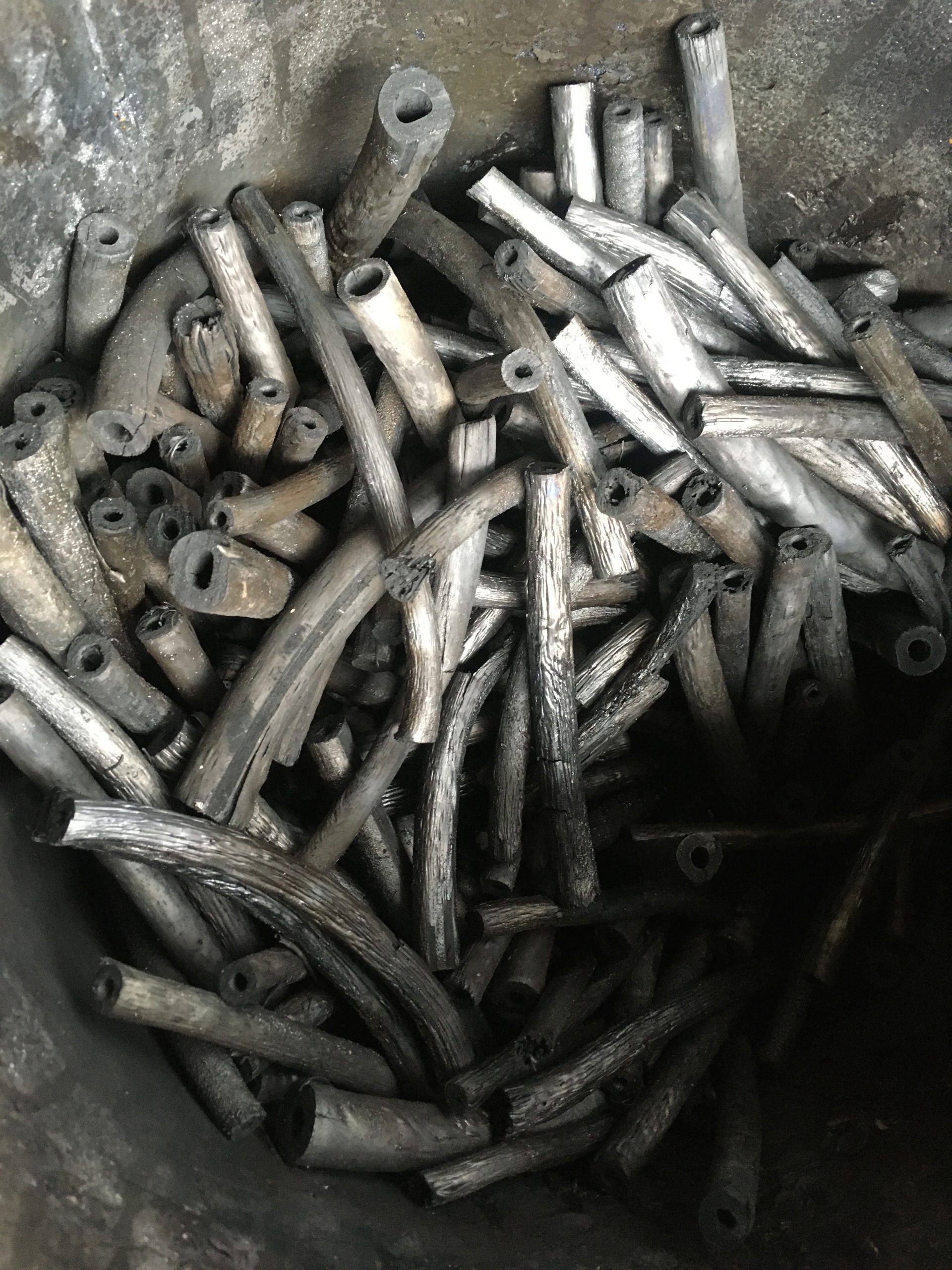


6 months after taking the cuttings (see previous post), over 90% have produced positive results – a much higher success rate than anticipated.
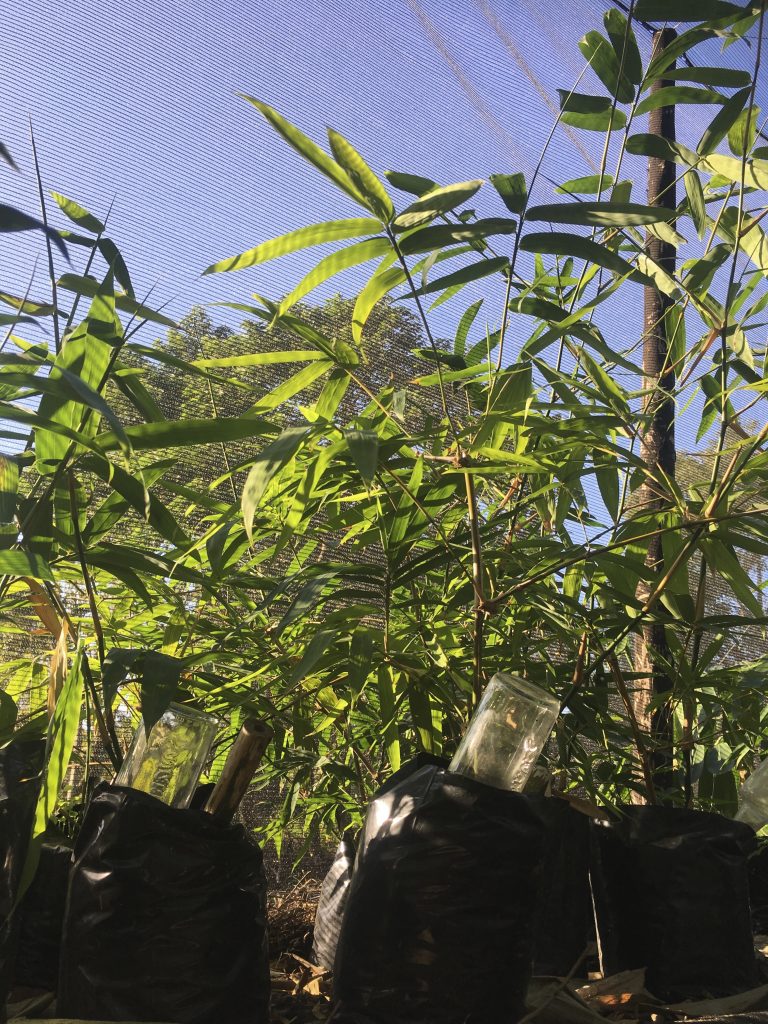
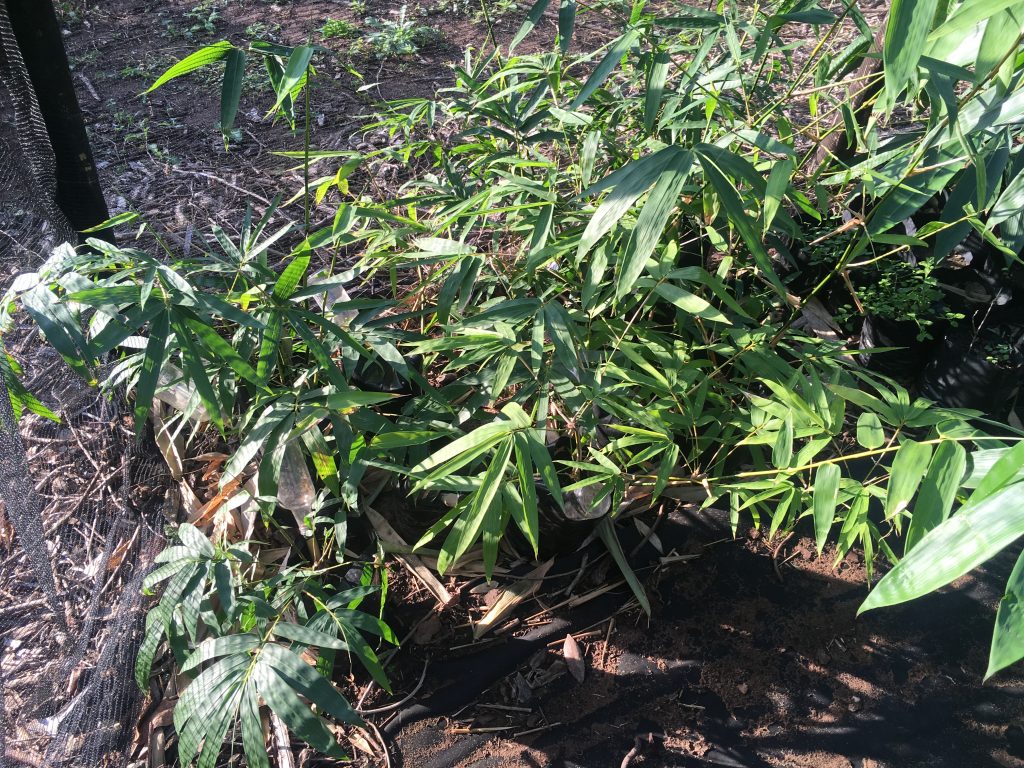
They are all produced very healthy root systems and are already desperate for more space!
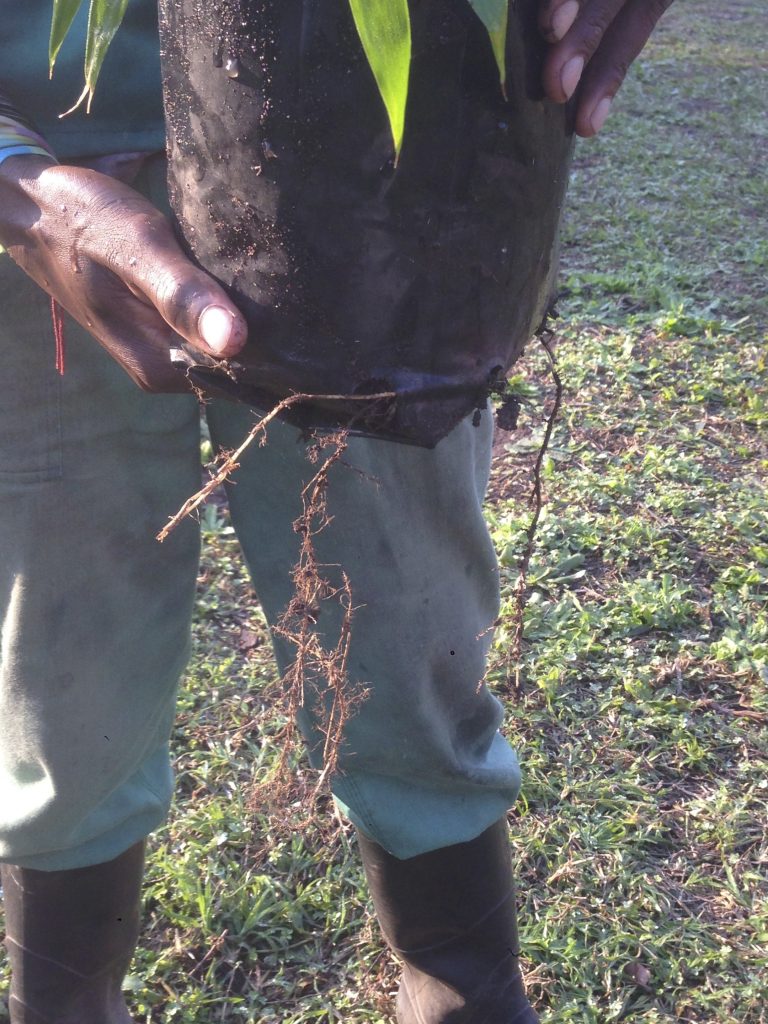

Most cuttings produced several strong new culms with a number of side branches and healthy looking leaves.

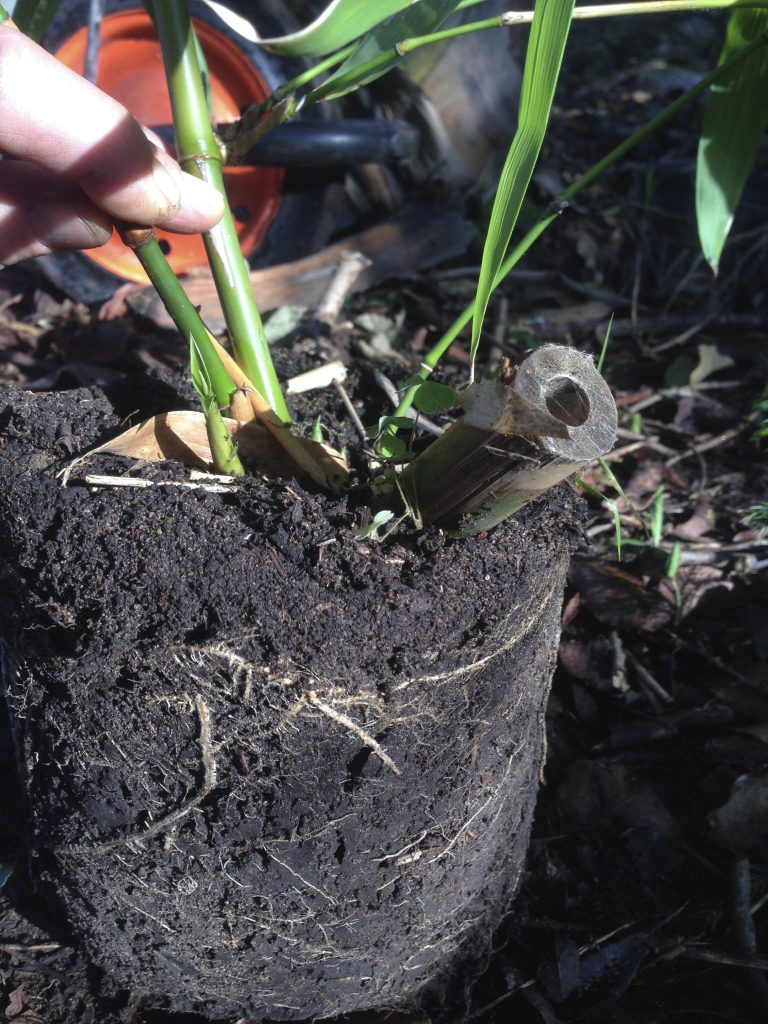
One of the prime examples – top height of over 170 cm!

To conclude – African bamboo likes to take root in the subtropical climate of coastal KZN 🙂
I will continue propagating (on a small scale) and can’t wait to begin propagation trials with my other species.
22nd December 2018 (at full moon) I cut a couple of culms, took the bottom five internodes and divided them into pieces and trimmed away the side branches apart from the main ones. Then I briefly soaked the cuttings in water with added honey and cinnamon.

I submerged the cuttings in the soil at a 45 degree angle, covering the nodes with soil and leaving the side branch with leaves sticking out vertically, with the top opening of the cutting above soil level to be able to add water on a daily basis for the first 4 weeks.
13th January, only three weeks later, and this first trial is already showing positive results:

20th January – this shoot is growing quickly!
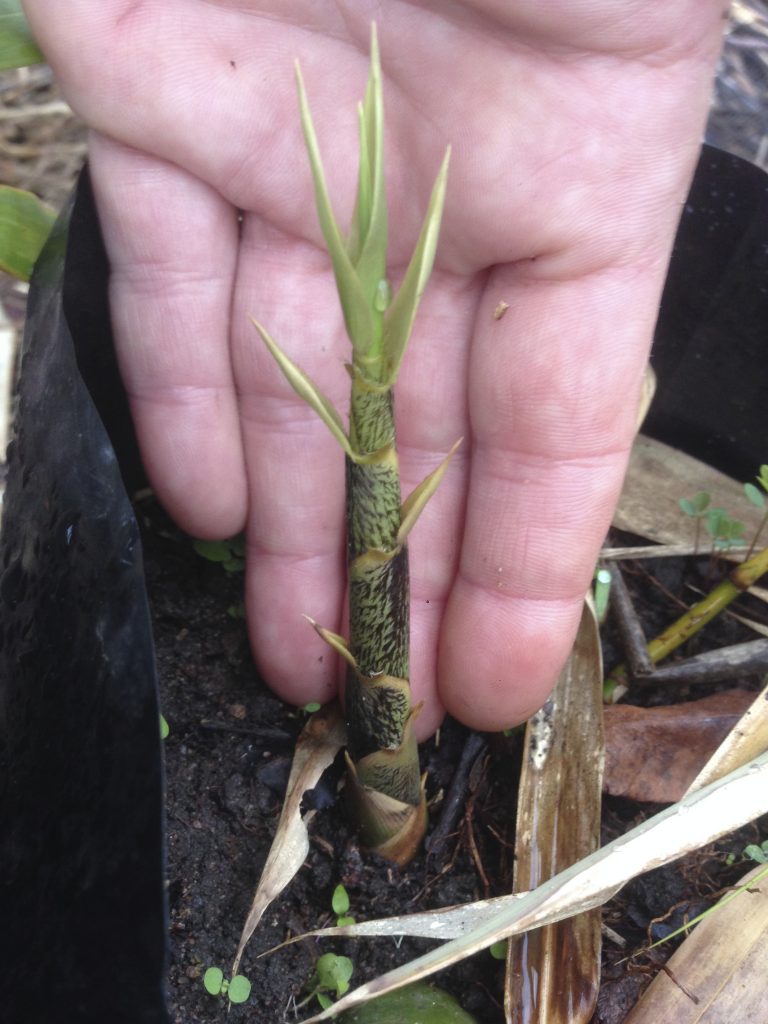
27th January:
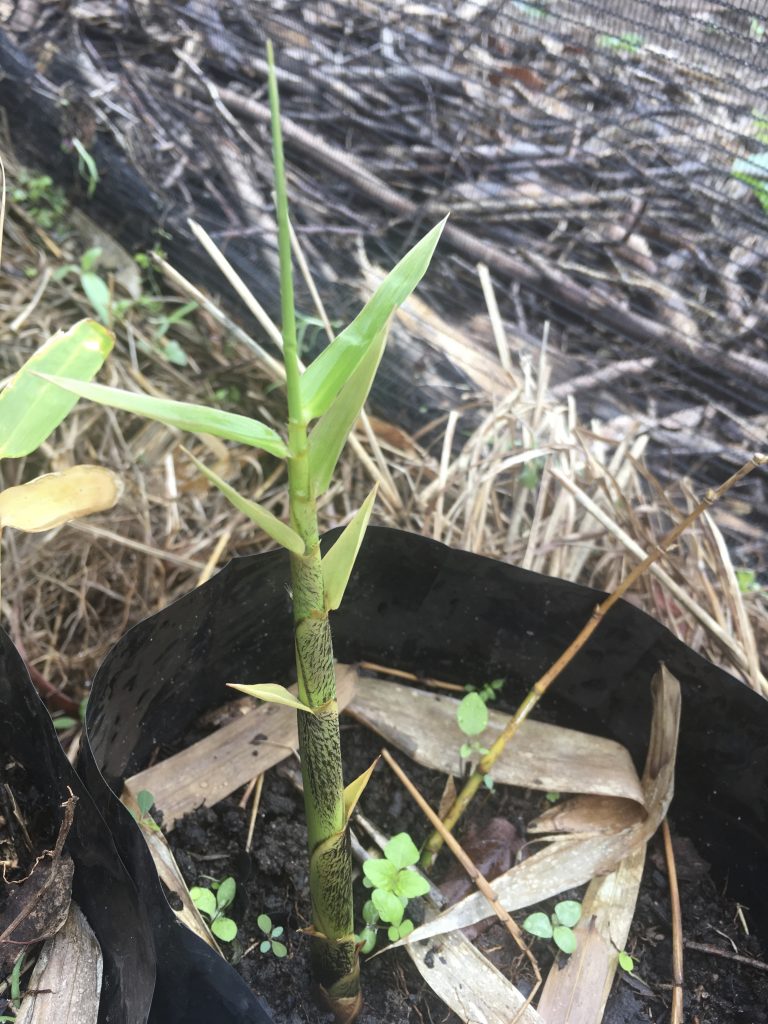
Not all cuttings produced shoots straight away but we took another round of cuttings at full moon in January 2019, which also started showing results. We will still have to see what the propagation success percentage will be and if the plants develop healthy rhizomes, which I will check upon my next visit soon.
Crafted at home in Liverpool with simple hand tools from bamboo I harvested in private gardens in South Africa and Germany, and some bamboo I ordered online in UK:

Short demonstrations here:
Thanks to Bananas Media for photos and video 🙂
In early July last year I ordered 3 Moso seedlings (Phyllostachys edulis – a giant timber bamboo) on ebay Germany and had them sent to my parents who lovingly potted them up and looked after them.
One of them I took to Liverpool in my hand luggage, and the other two were moved into my parent’s conservatory in autumn – to receive great interest from a little visitor who managed to sneak in unnoticed:
Unfortunately the liking was to such extreme that she completely devoured one of the bamboos and badly ‘pruned’ the other – to then have a nap in the sun-warmed pot!
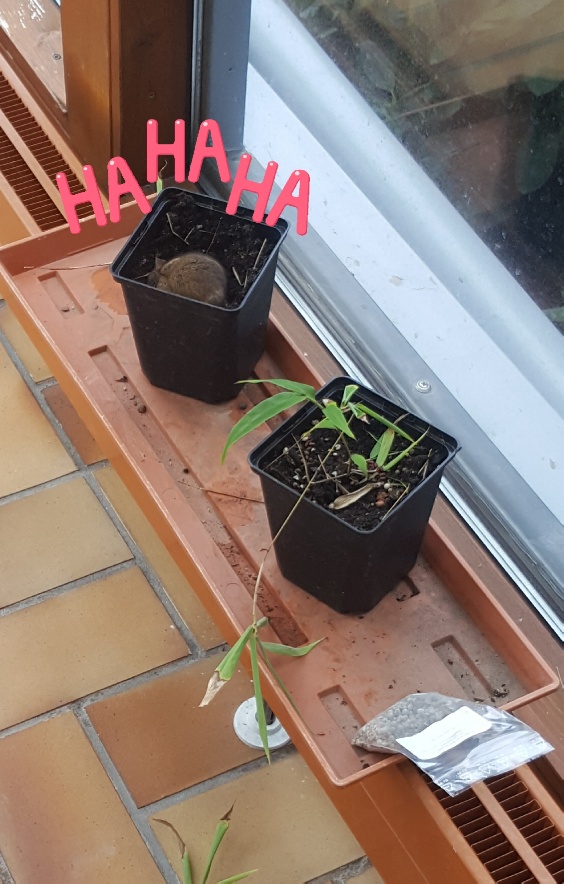
Luckily the survivor recovered with plenty of TLC by my parents and is currently doing very well on the warm and sunny window sill in their lounge.
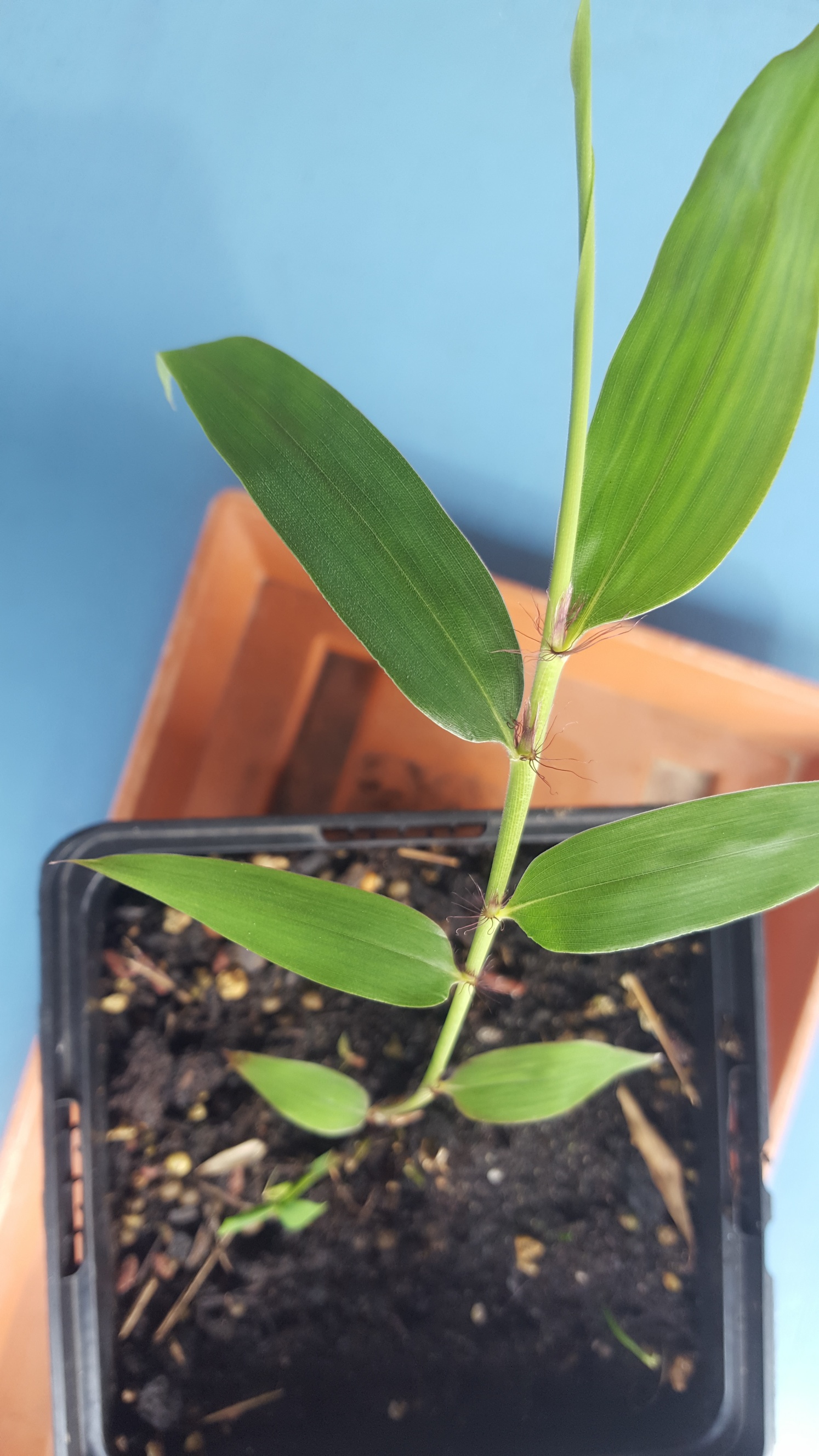
The Moso I carried in my hand luggage survived the trauma of the journey to England with no signs of damage:
I keep moving it around the room during the day for maximum sun exposure, and beginning of October a beautiful new shoot emerged:
I decided to give it a bit more space so now it is living in a discarded colander suspended in a bucket:
At the end of February, I got news from Germany that a new shoot emerged, and the plant in UK also produced this beautiful new sight over the last couple of weeks:

Of course the new shoots still have a very small diameter, and growth is very slow compared to the species I planted in South Africa, but they are equally enchanting:
One day they will be big and strong enough to be planted out, I yet have to find a suitable location – Moso is a hardy bamboo native to China and Taiwan and can survive temperatures down to minus 17 degrees celsius, but it likes a long, hot summer with plenty of rainfall to grow to it’s full size. In Europe it is now being commercially farmed in Southern Italy, and I would love to see how it will do in the area I grew up in. Aschaffenburg has the nickname “Bayrisches Nizza” (Bavarian Nice) for it’s mild climate, and in the right spot with the right care I believe Moso could do well.